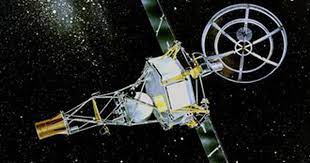On August 10, 1990, the Magellan spacecraft embarked on an extraordinary mission to explore the planet Venus. Magellan, also known as the Venus Radar Mapper, was a robotic spacecraft designed and operated by NASA's Jet Propulsion Laboratory. Its primary objective was to map the surface of Venus and study its geology and atmosphere. Launched on May 4, 1989, aboard the space shuttle Atlantis, Magellan traveled for over a year to reach Venus. The spacecraft was equipped with a sophisticated radar system that allowed it to penetrate the thick Venusian clouds and capture detailed images of the planet's surface. This was a groundbreaking endeavor, as Venus is known for its hostile environment with extreme temperatures, high atmospheric pressure, and corrosive sulfuric acid clouds. Upon arrival at Venus, Magellan began its mapping mission, systematically scanning the planet's surface using its synthetic aperture radar (SAR) instrument. The radar emitted radio waves towards the planet, which bounced back and were recorded by Magellan. By analyzing the radar echoes, scientists were able to create highly accurate topographic maps of Venus. Over the course of its four-year mission, Magellan completed 15 orbits around Venus and captured more than 4,000 images of the planet's surface. These images revealed a diverse and fascinating landscape, including vast plains, rugged mountains, and deep canyons. The data collected by Magellan helped scientists gain a better understanding of Venus' geological processes, such as volcanic activity and tectonic plate movements. One of the most significant discoveries made by Magellan was the presence of large volcanic features on Venus. The spacecraft revealed that the planet is covered in thousands of volcanoes, some of which are among the largest in the solar system. This finding challenged the previous notion that Venus was a geologically inactive planet and provided valuable insights into the planet's volcanic history. Magellan also provided valuable information about Venus' atmosphere. The spacecraft measured temperature variations, atmospheric pressure, and cloud composition, shedding light on the planet's extreme weather conditions. The data collected by Magellan helped scientists understand the greenhouse effect on Venus, where a thick carbon dioxide atmosphere traps heat and causes the planet's surface temperatures to reach scorching levels. In addition to its scientific contributions, Magellan also paved the way for future space exploration missions. The spacecraft's radar mapping techniques were later used in missions to other planets, such as Mars and Titan. Magellan's success demonstrated the effectiveness of radar imaging for planetary exploration and opened new possibilities for studying other celestial bodies in our solar system. After completing its mission, Magellan was intentionally sent into Venus' atmosphere on October 11, 1994, to avoid any potential contamination of other celestial bodies. The spacecraft disintegrated upon entry, leaving behind a legacy of valuable scientific knowledge and a better understanding of our neighboring planet. The Magellan spacecraft's mission to Venus on August 10, 1990, marked a significant milestone in planetary exploration. Through its radar mapping capabilities, Magellan revolutionized our understanding of Venus' geology, atmosphere, and climate. Its findings continue to shape our knowledge of the inner workings of our solar system, and its legacy lives on in the ongoing pursuit of unraveling the mysteries of the universe.
10 Aug, 1990 Magellan Space Craft
